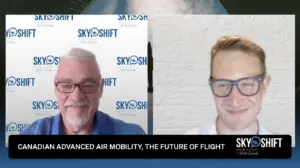TESLA AND THE PROBLEM WITH TEMPORARY PRODUCTION FACILITIES
Pre-orders were stacking up for the Tesla Model 3. Climate conditions played a big part in 450,000 customers waiting for vehicles they were expecting to already have.
In Spring 2016, Tesla CEO and visionary Elon Musk made splashy headlines when he announced the Model 3. Billed as the car of the future, the fully electric sedan boasted a range of 310 miles, breathtaking 0-60 mph acceleration in 3.5 seconds, and all the high-tech bells and whistles that made the automaker’s high-end cars legendary. Best of all, at a price starting around $35,000, the Model 3 was an affordable and stylish electric car for the masses. Over half a million excited customers plunked down the required $1,000 to make a reservation. But even after two years, 450,000 customers are still awaiting delivery of their wonder vehicle, while a scant 8,210 units reached their owners in the first quarter of 2018[1]. So, what went wrong?
According to Musk, Tesla had gone from “production hell” to “delivery logistics hell,” and as a result, the company was struggling to reach its goal of producing 5,000 cars per week. The CEO attributed much of the production fiasco to too many automated robots at the company’s 5.3 million square foot Fremont, CA Tesla Factory.[2] The machines just couldn’t perform simple tasks as quickly as humans. So, Musk decided to improvise and construct a temporary assembly line the size of two football fields outside the Fremont plant.
Challenges of Temporary Facilities
Musk’s Factory 2.0 is actually a temporary, open-air at the ends, rigid-roof structure that looks like a giant circus tent in photographs.[3] Unlike most enclosed permanent facilities, a temporary structure doesn’t come with the proper humidity and temperature controls one would expect to find on a production floor. High, uncontrollable temperatures can impact factory worker health, resulting in poor job performance and increased errors and injuries. Also, factory machines produce an abundance of heat, and without cooling mechanisms, the equipment can suffer from suboptimal performance, damage, and reduced useful life. Both human fatigue and equipment malfunctions brought on by excess heat and poor ventilation can all lead to costly downtime and unmet production goals.
Temporary Climate Solutions
Polygon makes climate control possible in temporary facilities like Factory 2.0. We provide turnkey, cost-effective temperature and humidity control solutions for manufacturers and third-party logistics providers. Our specialists have developed advanced systems for moisture control, temperature control, and air filtration, all with real-time monitoring to ensure a stable climate that maximizes worker productivity, optimizes production, and drives employee safety.
Can Tesla Meet Its Goals?
With the addition of the new assembly line, Tesla was able to build 5,031 Model 3s during the last week of June.[4]However, reports estimate that the last week of August saw only 4,300 units produced.[5] The jury is still out on whether Tesla will be able to ramp production back up over the 5,000 units benchmark and sustain the level of output to meet the backlog of reservations. But what is known is that a stable climate is key to optimizing manufacturing processes and helps put production goals in sight.
Click to learn more about Polygon’s temporary climate solutions for manufacturing facilities.
Read more at polygongroup.com
[1]https://www.recode.net/2018/6/4/17414496/nearly-a-quarter-of-teslas-model-3-reservation-deposits-in-the-u-s-have-supposedly-been-refunded
[2] http://fortune.com/2018/04/13/tesla-elon-musk-robot-human-model-3/
[3] http://fortune.com/2018/06/25/elon-musk-tesla-tent-factory-model-3/
[4] https://www.engadget.com/2018/07/02/tesla-made-5-031-model-3s-in-a-week/
[5] https://www.engadget.com/2018/09/02/tesla-reportedly-missed-august-model-3-goal/








